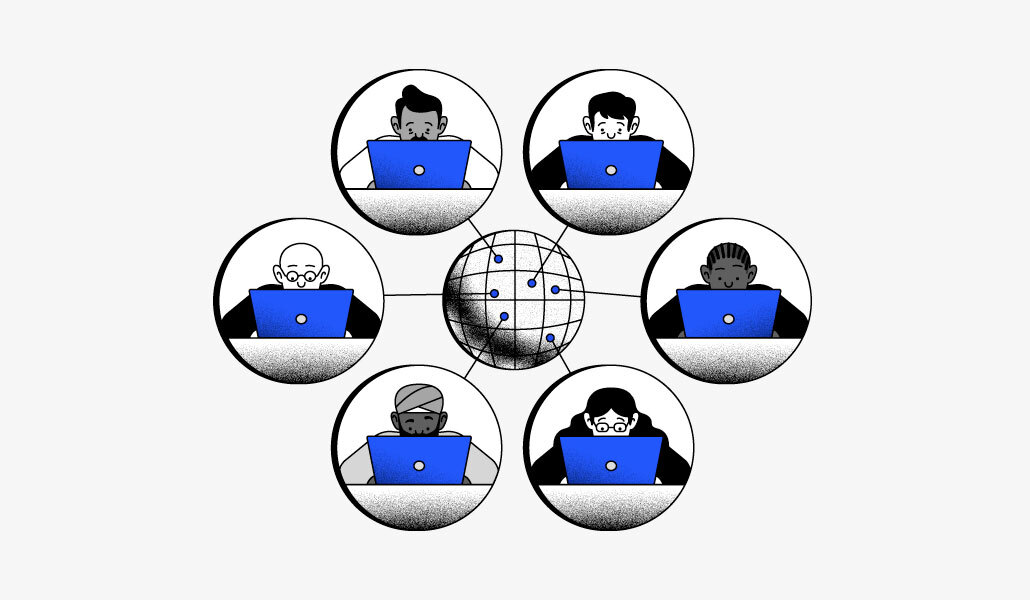How Meta is redesigning the way its distributed employees work together

For most companies, figuring out what workplace model best suits their workforces and organizational needs will be an ongoing process of trial and error that will iterate over the next few years. Meta is no exception.
Unlike its big-tech counterparts Apple and Google, Meta is pushing forward with its remote, decentralized working model. In March many of its senior leadership team reportedly spread out to work from a range of locations beyond its Silicon Valley headquarters including New York, Hawaii, the U.K. and Israel.
That’s a strategy that won’t be without its headaches. But Meta’s senior leadership is laser-focused on ironing out any inevitable kinks.
Much of Meta’s hybrid working strategy will focus on adapting its people practices, products and spaces to support distributed teams, according to Brynn Harrington, Meta’s vp, people experience. “Every business today is grappling with how to make hybrid working work,” she said “At the core, this is about redesigning the ways we work together, and getting this right is going to take years.”
Establishing what different challenges occur for distributed teams vs teams which are physically together in one office location is a priority. And finding the right balance between in-person and remote work will require some experimentation. “We’re focusing a lot right now on how to make synchronous collaboration seamless across locations and supporting in-person time at the right moments,” added Harrington.
The future of meetings
The meetings-overload struggle is real. Numerous reports have surfaced over the past year highlighting just how inefficient many companies have become at overpacking people’s schedules with meetings, in many cases causing an unhelpful cocktail of exhaustion and poor productivity. Some companies have gone to extreme lengths to address this.
Now there is the added complexity of running meetings where not all attendees are in the same room. That’s turning out to need some planning, with many opting for meetings moderators to ensure everyone gets included. It’s also given rise to a new term to show what good looks like -what’s become known as “meeting equity.”
At Meta, figuring out the best formula for meetings is at the core of its workforce strategy, according to Harrington. “We’re encouraging 25-minute meetings to encourage regular breaks and create a parity of experience for those in the office who need to change rooms without missing the start of the meeting,” she added.
But Meta is also an advocate of virtual reality meetings. Naturally, its employees are the perfect test bed for the development of its own product range, which includes workplace tools like Horizon Workrooms – a virtual reality meeting space.
Harrington uses Horizon Workrooms for her weekly team meeting. She worked on her avatar to best resemble her physical appearance, but colleagues are encouraged to be creative with their depictions. “That’s one of the beautiful things: you can choose to express yourself in whatever way feels best – your haircut, your clothes,” Harrington said. “It does a lot to level the playing field and gives people voice and expression, which is a fundamental value at Meta.”
She said the experience is very difficult to describe. “You have to try it, really – but you do feel like you are there, with colleagues. It’s been inspiring for my team to glimpse what the future could look like,” she said.
Attendees sit around a table in whatever setting is desired – maybe the beach – and can hear voices as one would in a room. For instance, if the person to your left is speaking, you will hear them from that direction. “You can also see people’s facial expressions,” said Christine Trodella, head of business-to-business commercial sales at Meta’s Reality Labs and head of Workplace from Meta, who lives in Mill Valley, California. “We are investing a lot in making these avatars personalized and real to people.”
Creating optimal environments for work
A core concept around Meta’s community platform Workplace and other workplace tools like Horizons and Rooms (its videoconferencing tool for distributed teams) is to develop technology which helps people feel more connected and collaborate well if they’re working remotely.
Everybody thinks of collaboration as a video conference,” said Trodella. “That’s one modality, but it’s not limited to that. For example, wouldn’t it be cool if, soon, you could attend an in-person meeting at the head office as a hologram? And when thinking through new designs, instead of collaborating in a document, what about interacting with a 3D representation?”
Workplace for Meta began as a tool to support internal communication and was later rolled out externally to Meta customers. Much of its workplace product strategy and guide designs have been informed by customer research which spotlighted the pain points for companies grappling with the transition to hybrid working, according to Trodella. One of these is concerns over employee productivity and how to ensure it remains high, despite the numerous distractions and long side effects of living through a global pandemic.
For Meta, and its products, that means using technology to work smarter, not harder, and even to conjure the best working environment for any individual. “It’s not just the smartphone and the laptop enabling a video conference, but it’s those additional tools that will come through as technology whiteboards,” said Trodella. “For example, if someone finds their optimal place to work is in a quiet garden, then create that environment virtually.”
The tech company will continue to iterate its workplace products based on internal employee – as well as customer – feedback. But one thing is clear: the company doesn’t plan on reneging from its current hybrid, decentralized plan and wants its employees to “lean into distributed teams” and use the products it is building, Harrington stressed.
Metaverse mass adoption challenge
Naturally, there is still much scepticism from external businesses. Angela Ashenden, principal analyst of workplace transformation at CCS Insight, questions whether companies are likely to meet and do business in the metaverse en masse, any time soon. “It will be several years before organizations feel the need to provide every employee with a VR or augmented reality device as they do with mobile phones or laptops, which would allow virtual meetings to become normalized.”
She added that the virtual collaboration use case for extended reality will likely be consumer-led like mobile phones, rather than enterprise-led, as AR has been so far.
Major organizations have gone all in on trialling having a workplace presence in the metaverse. Management consultancy Accenture created a virtual campus for all 150,000 of its new hires to onboard through, earlier this year. Elsewhere, Wunderman Thompson, a global advertising agency network ran an onboarding event in the Metaverse for all employees who joined the company during the pandemic. But so far, they’re in the minority.
And whether or not the metaverse will have a central role in the future of work, is unclear. “The metaverse is incredibly intangible at the moment,” said Tom Ffiske, the editor of the Immersive Wire, a newsletter about metaverse developments. “Besides, even if the pain points are addressed, there are myriad factors to consider.” These include the input methods, such as VR or AR, why people will want to enter the metaverse “when video meetings are easier at times,” and whether organizations using Workplace need all the functions.
Tushar Agarwal, CEO and co-founder of U.K.-based workplace finder Hubble, was more optimistic. “There are virtual office platforms that are being created and gathering steam such as Gather, Cosmos, and SoWork that are bringing the metaverse to our working lives,” he said. “As we move further towards a hybrid future, these virtual office platforms will become a crucial part of the workplace mix.”


